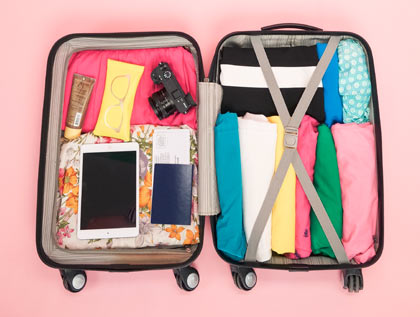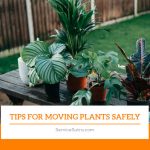Moving home can be both exciting and daunting, especially if you’re a travel enthusiast or frequent traveler. One of the challenges of moving is packing your travel equipment safely. In this article, we’ll help you learn how to pack your travel equipment while moving home to a different town, city, state, or country.
Why Packing for a Safe Move is Important
Packing your travel equipment correctly is essential to avoid any damage during transportation. Proper packing ensures that your items remain intact and in good condition, saving you from the cost and hassle of replacing or repairing them. Therefore, it’s crucial to know how to pack your travel equipment correctly.
Find packers and movers near you.
Evaluate your Travel Equipment for the Move
Before packing, it’s essential to evaluate your travel equipment. Assess what equipment you have and decide what you need to bring and what you can leave behind. Create a packing list that includes everything you need and sort through your items, decluttering as you go.
Let’s Help You With Packing Some Common Travel Items
Hiking Boots
Clean your boots and remove any dirt or debris before packing them. Stuff them with socks, t-shirts, newspapers, or other soft items to maintain their shape and keep them secure during the move.
Wrap each of your hiking boots in bubble wrap or towels to prevent them from getting scuffed or damaged during the move. Additionally, put them in a plastic bag to prevent any dirt or moisture from spreading.
Foldable Toothbrush
Foldable toothbrushes are designed to be compact and easy to pack. You can simply pack them in a small plastic bag or toiletry kit to keep them clean, separate from other items, and hygienic during the move. You can also pack your foldable toothbrush in a small container to prevent any dirt or germs from spreading.
Travel Pillows
The process of packing your camping pillows will depend on their type. If it’s an inflatable pillow, deflate it completely and fold it into a compact size. If it is of any other material, try to squeeze it as much as you can and place it in a protective cover to prevent any dirt or moisture from getting to it.
Headphones
When packing your headphones, wrap them around your mobile device or any other object to maintain their shape. You can also wrap them in bubble wrap or a soft cloth to protect them from damage.
Use a protective case or a plastic bag to prevent any damage to the wires or the ear cups. Pack them in a separate bag or case to keep them safe and prevent tangling.
Travel Clothes
Roll your travel clothes instead of folding them to save space and prevent wrinkles. Use packing cubes to organize them by category or outfit. Label each cube or bag for easy identification. Pack them in a separate bag or suitcase and do not mix them with any container with liquid content.

Travel Towels
Fold your travel towels neatly and place them in a protective cover or a plastic bag to prevent any dirt or moisture from getting to them.
Make sure to label them and pack them in a designated box for towels. Alternatively, you can also roll the towel tightly and pack it in a waterproof bag to prevent it from getting damp or musty during the move.
Travel Mini Umbrellas
Because mini umbrellas take up lesser space than large umbrellas, they are perfect as travel gear, especially if you visit a rainy place. Additionally, they aren’t much of a hassle to pack when you move home.
You can simply wrap your mini umbrella in a plastic bag to prevent any moisture or dirt from spreading. Alternatively, you can fold your travel mini umbrella and pack it in a protective sleeve to prevent it from getting damaged. Pack it in a separate bag or suitcase to keep it safe and easy to find.
Travel Rain Jackets
Rain jackets are a must-have if you are moving to a rainy place. When packing one, place it in a protective cover so it is not exposed to any kind of wear and tear during the move.
You can also place it in a waterproof bag to keep it dry and clean during the move. Fold it neatly to prevent creases and wrinkles. Make sure to label it and pack it in a designated box for jackets.
Pocket Blankets
Pocket blankets come in handy when you are visiting a cold place, but don’t have enough space to carry mighty blankets. These blankets are designed to be lightweight and easy to pack, making them easy to carry around during a move.
Just fold your pocket blanket neatly into a compact size and pack it into the small bag or pouch that accompanies it. You can add another protective cover or a plastic bag to prevent exposing it to dirt and moisture.
Pill Organizers
Pack your pill organizers in a small plastic bag or toiletry kit to prevent any spills or damage to the medicines. It will further keep the pills clean and hygienic during the move. Label it and pack it in a designated box for medications.
Collapsible Water Bottle
Collapsible water bottles are perfect for travel since they can be rolled up and stored in a small space. Before packing, make sure to clean it properly and let it dry. Then, fold it up and pack it in your backpack or suitcase. Remember to keep it in an upright position to avoid any leaks.
Portable Charger
A portable charger is essential for keeping your electronic devices charged while on the move. Before packing, charge your portable charger fully. Pack it in a separate compartment of your backpack or suitcase. Make sure to carry its charging cable as well.
Antitheft Bag
An antitheft bag is an excellent option to keep your valuables safe while traveling. Before packing, clean it properly and let it dry. Then, pack your valuables in the different compartments of the bag. Make sure to carry the bag with you instead of keeping it in checked luggage.
Digital Luggage Scale
A digital luggage scale can help you weigh your luggage before heading to the airport. Before packing, make sure to charge the scale fully. Then, pack it in an accessible place so that you can weigh your luggage whenever needed. Use bubble wrap to protect it from accidental damage during the move.
Ultralight Backpack
An ultralight backpack is a perfect option for short hikes and day trips. Before packing, clean it properly and let it dry. Pack all the necessary items, such as water bottles, snacks, cameras, and sunscreen, in the different compartments of the backpack. Make sure to keep the heavier items at the bottom for better balance.
Waterproof Phone Case
A waterproof phone case can protect your phone from water damage while traveling. Before packing, clean your phone case and let it dry. Then, put your phone in the case and make sure it is fully sealed.
Mini Travel Flashlight
A mini travel flashlight is useful for camping and hiking trips. Before packing, make sure to check the batteries and replace them if necessary. Pack it in an easily accessible place in your backpack or suitcase.
Camera and Accessories
Cameras and accessories should be packed carefully to avoid any damage. Before packing, remove the batteries and memory card. Pack the camera and accessories separately in padded cases. Remember to carry the charger as well.
Travel First-Aid Kit
A travel first aid kit is essential for any trip. Before packing, check the expiry dates of all the items in the kit. Pack it in an easily accessible place in your backpack or suitcase.
Seat Cushion
A seat cushion can provide extra comfort during long flights or car rides. Before packing, make sure to deflate the cushion and fold it properly. Pack it in a separate compartment of your backpack or suitcase.
Packing Tips for Travel Equipment
When it comes to packing your travel equipment for a move, there are several tips to keep in mind to ensure that your items are transported safely and efficiently. Here are some helpful tips:
Sort Items by Category
One of the most important tips when packing your travel equipment is to sort your items by category. This means grouping similar items together, such as electronics, clothing, toiletries, and outdoor gear.
By doing so, you can easily identify what items you have and pack them more efficiently. For example, you can pack all your toiletries in one bag or box, making them easier to find and unpack when you arrive at your destination.
Separate Fragile from Delicate Items
When packing your travel equipment, it’s essential to separate fragile and delicate items from other items to prevent damage. These items may include camera lenses, glasses, and electronic devices.
To keep them safe, use bubble wrap or other cushioning materials to wrap them individually. You can also use packing peanuts or air pillows to fill any empty space in the box or bag.
Additionally, make sure to label the boxes or bags containing these delicate items as “fragile” so that the movers will handle them with extra care. Finally, consider packing delicate items in your carry-on bag to ensure they remain under your supervision and don’t get damaged during transit.
Use Appropriate Packing Materials
It’s essential to use the right packing materials when packing your travel equipment. Bubble wrap, packing paper, and foam peanuts are excellent options for protecting fragile items such as cameras and electronics.
Use sturdy boxes, and don’t overload them. Also, make sure to seal your boxes and label them clearly. For items like hiking boots or camping pillows, you can use a reusable cloth bag or a plastic storage bin.
Pack Heavy Items at the Bottom
When packing your travel equipment, always place heavy items at the bottom of your bag or box. Doing so ensures that they won’t crush or damage lighter items during transit.
For example, you can pack your hiking boots or sleeping bag at the bottom of your backpack or duffel bag, with lighter items on top. This way, you won’t have to worry about your items shifting during transport and potentially causing damage.
Use Travel Space Bags
Travel space bags are an excellent way to maximize storage space and keep your clothes organized. To use them, simply place your clothes inside the bag, seal the bag, and then roll the bag to remove the air.
This will compress your clothes, making them take up less space. You can use a vacuum cleaner to suck the air out of the bag, but it’s not necessary. These bags are especially useful for bulky clothing items like jackets and sweaters.
Use Travel Laundry Bags
Keeping your dirty laundry separate from your clean clothes is essential when travelling. Packing a travel laundry bag will keep your dirty clothes contained and prevent them from mixing with your clean clothes.
A mesh laundry bag is ideal since it’s breathable, allowing your dirty clothes to air out while keeping them separate from the rest of your luggage. These bags are also useful for storing your shoes and other small items.
Pack Shoes and Boots Separately
To prevent your shoes and boots from damaging your other items, pack them separately in plastic bags or shoe boxes.
Use Collapsible Containers
Collapsible containers are ideal for packing travel equipment, especially if you have limited space. They can be easily folded when not in use and can be expanded to their full size when you need them. Use them to store items like cookware, utensils, and food.
Pack Electronics in Waterproof Bags
Electronics such as your camera, phone, and portable charger is sensitive to water damage. To protect them from the elements, pack them in waterproof bags or cases. If possible, pack them in your carry-on bag so you can keep an eye on them during the move.
Use a Waterproof Bag for Toiletries
Toiletries can easily spill during a move, especially if they are not properly sealed. Use a waterproof bag or container to pack your toiletries to prevent any spills or leaks from ruining your other items.
Use Luggage Locks
A luggage lock can provide an extra layer of security to your luggage. Use them to lock your suitcases, backpacks, and other bags, and make sure to set the lock combination. Also, use TSA-approved locks if you are flying to prevent any issues with security checks.
Pack Essential Items in Carry-on Bags
When moving, it’s important to pack some essential items in your carry-on bag in case your checked luggage is delayed or lost. Pack items like a change of clothes, toiletries, medication, and important documents.
Label Boxes and Bags for Easy Identification
Labelling your boxes and bags can help you quickly identify them during the move. Use a permanent marker to label each box or bag with its contents and destination. This will make it easier for you and your movers to identify which items go where.
Keep your Travel Documents Together
Make sure to keep all your travel documents together in a safe and easily accessible place, such as a travel document organizer or a small bag. This includes your passport, visa (if applicable), boarding passes, and any other important travel documents.
Leave Some Space for Last-Minute Items
Leave some space in your bags and boxes for any last-minute items you may need to pack. This will save you the hassle of having to repack everything and will ensure that you don’t forget anything important.
Consider Getting Professional Help
If you’re feeling overwhelmed with the packing process, consider hiring professional packers and movers. They can help you pack your belongings safely and efficiently, and can even provide packing materials if needed.
Different Types of Packing Materials
When packing your travel equipment, it’s important to use appropriate packing materials to keep them safe during the move. Here are some commonly used packing materials and their recommended uses:
- Bubble wrap: Use to protect fragile items like cameras, lenses, and electronics.
- Packing peanuts: Use to fill empty spaces in boxes to prevent items from shifting during the move.
- Packing tape: Use to secure boxes and wrap items that may come apart during the move.
- Foam sheets: Use to wrap delicate items like electronic gadgets.
- Plastic bags: Use to store shoes, boots, and other dirty or wet items.
- Wardrobe boxes: Use to transport hanging clothes to prevent wrinkles and damage.
- Heavy-duty boxes: Use for heavy or bulky items like camping gear, cookware, and books.
Conclusion
Moving to a new place can be a challenging experience, especially when it involves packing your camping and travel equipment. However, with proper planning and execution, you can make sure your items arrive safely at your new destination.
Use this article as your guide to pack your travel equipment safely and securely and ensure that you’re ready for your next adventure in your new home.






